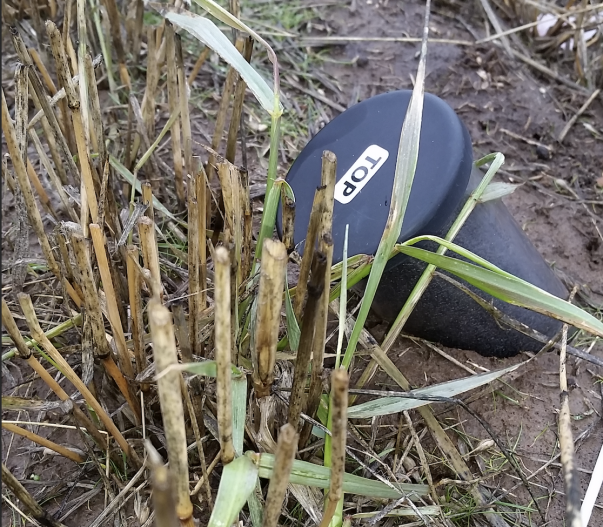May 17, 2023 at 9:07 am | Updated May 15, 2023 at 3:35 pm | 4 min read
Wheat is one of the most important cereal crops in the world, providing a substantial portion of the global population’s caloric intake. In recent years, researchers have been working to develop perennial wheat varieties that would allow the crop to survive for multiple years without the need for replanting. This wheat saves resources, reduces environmental impact, and increases crop yields. However, previous attempts to create perennial wheat have encountered significant challenges, with poor survival over the second winter.
To understand and overcome these challenges, scientists at Washington State University are investigating a hybrid cross between wheat and tall wheatgrass (Thinopyrum ponticum), a distant relative of wheat with a perennial habit. The research team, led by Ian Clark, suspects that root structure could play a vital role in the perenniality of these hybrid plants. By studying the root structure of the hybrid cross and comparing it to both parent plants, they hope to gain insights into the underlying mechanisms of perenniality and ultimately develop a successful perennial wheat variety.
The Research Team and the CI-600 In-Situ Root Imager
Leonardo Hinojosa, a Ph.D. candidate working on the project, is a member of Ian Clark’s research team at Washington State University. The team’s research focuses on comprehending and contrasting the root structure of the hybrid plant with a cutting-edge root imaging tool called the CI-600. The CI-600, In-Situ Root Imager, is a powerful instrument that enables researchers to photograph the roots of plants in high resolution non-destructively. Understanding the underlying mechanics of plant growth and development requires extensive information regarding root architecture and growth dynamics, which the tool gives in abundance. The CI-600 allows Clark’s team to examine the hybrid cross’s root structure with data thoroughly.
Subscribe to the CID Bio-Science Weekly article series.
By submitting this form, you are consenting to receive marketing emails from: . You can revoke your consent to receive emails at any time by using the SafeUnsubscribe® link, found at the bottom of every email. Emails are serviced by Constant Contact

Investigating Root Structure
The term “root architecture” describes a plant’s overall root structure and organization, including the size, shape, and placement of individual roots. Conversely, growth dynamics refers to how roots develop, spread, and engage with their surroundings. Understanding how plants receive water and nutrients and react to environmental challenges depends on both elements of the root structure.
Clark’s team is contrasting the hybrid cross’s root structure to that of both parent plants to understand better the possible influence of root structure on the perenniality of the hybrid cross. In addition, the scientists carefully examine the images produced by the CI-600 in search of variations in root architecture and development dynamics that might account for the unsuccessful survival of earlier perennial wheat initiatives.
The study team aims to find any variations that may be causing the low survival rates of earlier perennial wheat attempts by comparing the root structures of the hybrid cross and its parent plants. For instance, if the hybrid cross has a shallower or smaller root system than its parents, it may help explain why it cannot survive the winter.
The Future of Perennial Wheat
Root architecture could significantly impact the developing wheat varieties if Clark’s team successfully pinpoints the root structure-related elements influencing the hybrid cross’ perenniality. As a result, researchers may be able to create more durable and sustainable perennial wheat types and increase crop yields with a better understanding of root structure.
Farmers would need less seed, labor, and fuel if perennial wheat cultivars could eliminate the yearly requirement to replant wheat crops. Ultimately, this would result in a more sustainable and environmentally friendly farming system. Perennial wheat cultivars may also contribute to soil stabilization, erosion reduction, and general soil health, which is crucial to maintaining productive agricultural fields.
Perennial wheat has advantages for the environment and can boost crop output. Perennial plants often have longer growing seasons than annual plants, leading to higher total productivity. Furthermore, since farmers would not be as reliant on the success of a single annual crop, perennial wheat could offer them more stable income streams.
The findings from the research team’s ongoing examination of the hybrid wheat-tall wheatgrass plant’s root system will significantly contribute to our understanding of perenniality in plants. Other crops could also benefit from the application of this knowledge, which would eventually result in the growth of a more diverse and robust global food chain.

Conclusion
A significant advancement in the goal of sustainable agriculture is the creation of perennial wheat cultivars. Ian Clark’s group at Washington State University is utilizing the CI-600 root imaging device to examine the root structure of a hybrid cross between tall wheatgrass (Thinopyrum ponticum) and wheat to understand the problems behind the perenniality of these plants. Their research may eventually lead to the developing of more resilient and sustainable crop varieties that boost crop yields while enhancing soil health and the environment.
The study by Clark’s group demonstrates the significance of comprehending the intricate relationships between plants and their surroundings and the potential for cutting-edge technologies like the CI-600 to alter our knowledge of plant growth and development fundamentally. Researchers can contribute to ensuring that agriculture and world food production has a more sustainable and resilient future by continuing to push the limits of scientific knowledge in this domain.
Study:
https://www.frontiersin.org/articles/10.3389/fsufs.2019.00039/full
Related Products
Most Popular Articles
- Transpiration in Plants: Its Importance and Applications
- Leaf Area – How & Why Measuring Leaf Area…
- How to Analyze Photosynthesis in Plants: Methods and Tools
- Plant Respiration: Its Importance and Applications
- The Forest Canopy: Structure, Roles & Measurement
- Stomatal Conductance: Functions, Measurement, and…
- Forest & Plant Canopy Analysis – Tools…
- Root Respiration: Importance and Applications
- The Importance of Leaf Area Index (LAI) in…
- Irrigating with Saline or Seawater






